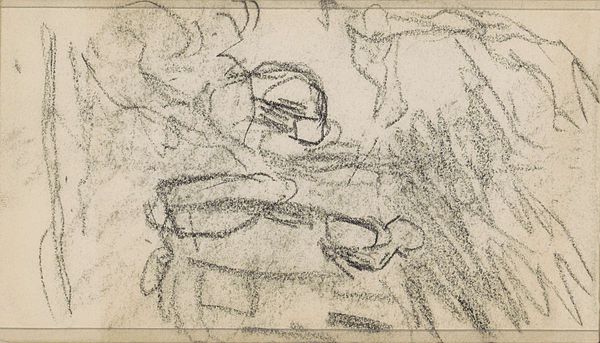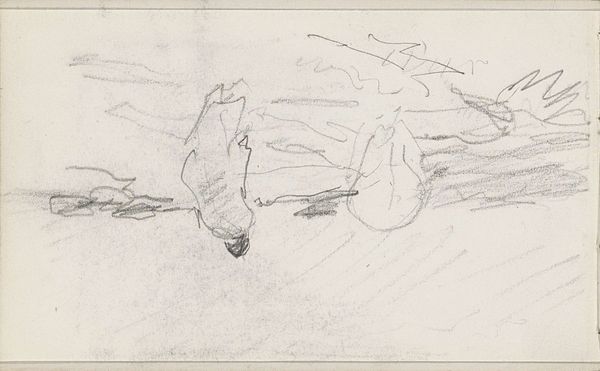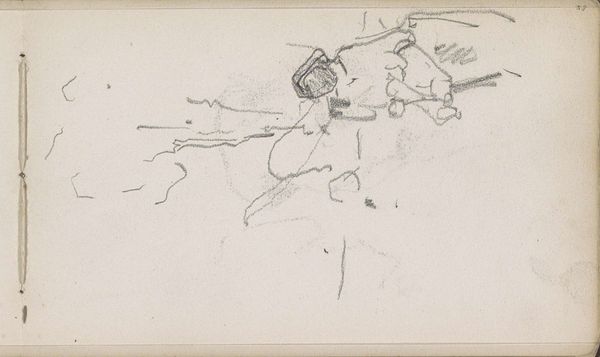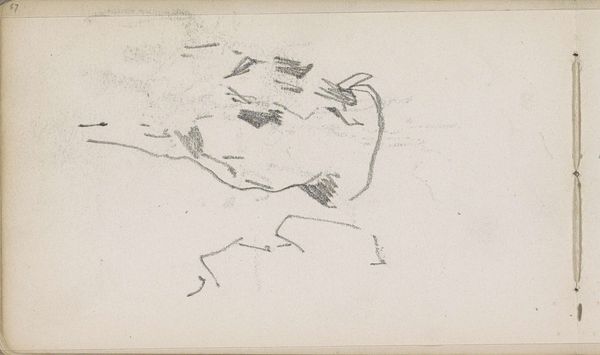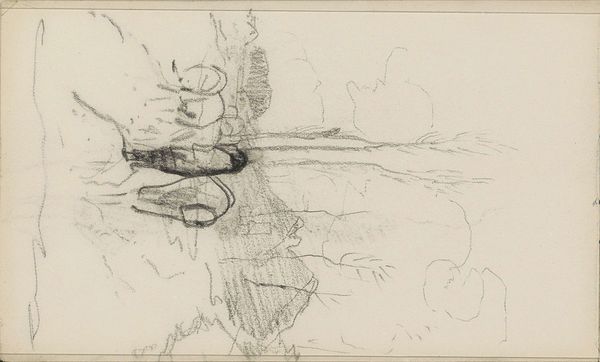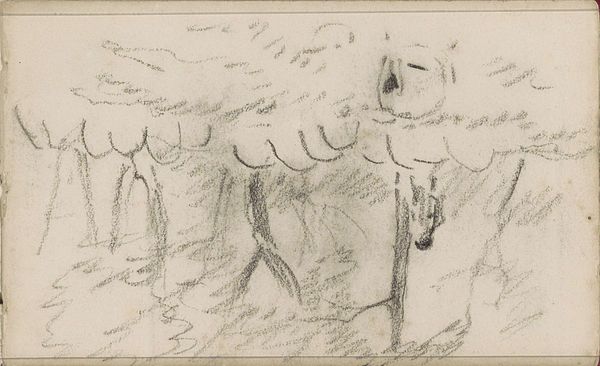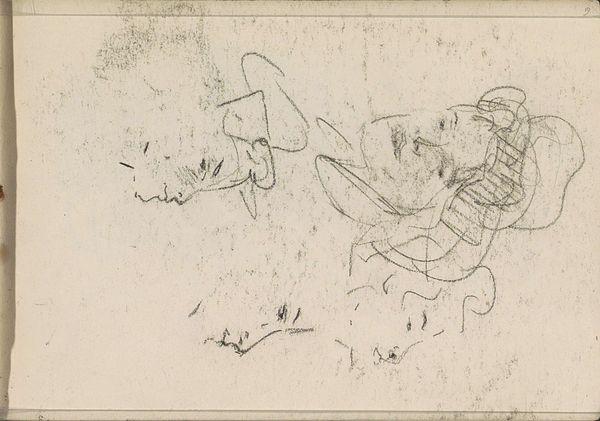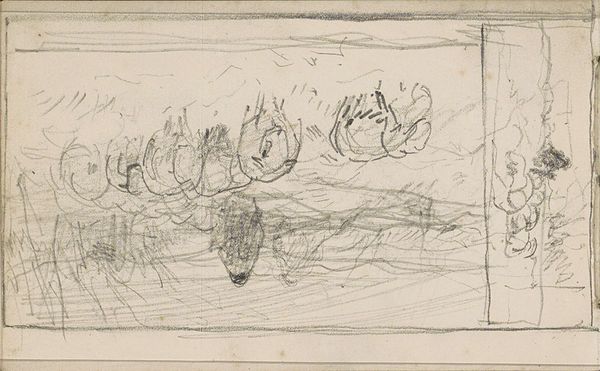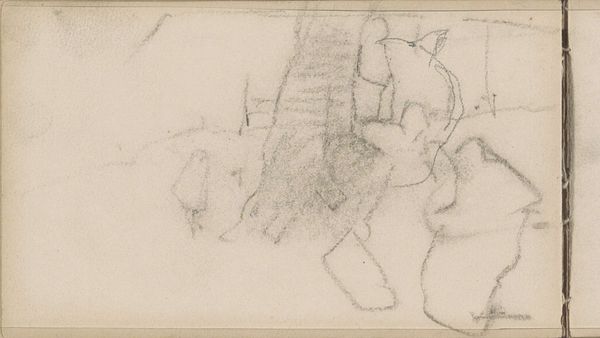
drawing, pencil
#
drawing
#
amateur sketch
#
light pencil work
#
impressionism
#
pencil sketch
#
incomplete sketchy
#
landscape
#
personal sketchbook
#
idea generation sketch
#
ink drawing experimentation
#
pen-ink sketch
#
pencil
#
sketchbook drawing
#
realism
#
initial sketch
Copyright: Rijks Museum: Open Domain
Editor: So, this is "Landscape with a Flock of Sheep," a pencil drawing by Anton Mauve, dating from around 1848 to 1888. It's a very faint, almost ghostly image. I’m curious, with its minimal detail, what stands out to you? Curator: Immediately, I’m drawn to the symbolic weight of sheep within landscape imagery. Historically, sheep have often represented innocence, dependence, and a connection to the pastoral ideal. Editor: A pastoral ideal, interesting. Curator: Yes, but Mauve offers more than just a pretty picture. This sketchy, unfinished quality might point towards a questioning of that very ideal. The fleeting nature of the impression challenges the notion of a stable, unchanging rural life. Do you sense that ambiguity as well? Editor: I do, now that you mention it. The sketchiness makes it feel more immediate, less romanticized. Curator: Precisely. It hints at the realities of rural existence rather than perpetuating a myth. Consider how the obscured forms contrast with more traditional, detailed landscape paintings of the time. Editor: It definitely breaks away from that tradition. This feels more personal, like a fleeting moment captured in time. Curator: And within that moment lies the essence of memory – fragmented, suggestive, and deeply personal. Editor: That’s a really insightful perspective, seeing it not just as a landscape, but as a visual memory. I’ll definitely look at landscapes differently now. Curator: It’s amazing how much cultural weight a seemingly simple image can carry, isn’t it? It gives me a different appreciation for these preliminary sketches.
Comments
No comments
Be the first to comment and join the conversation on the ultimate creative platform.

